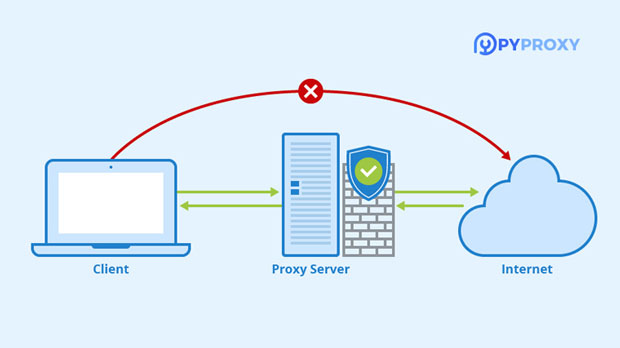In today’s digital world, online privacy has become a growing concern. With widespread tracking by websites, advertisers, and even hackers, protecting your personal data is essential. socks5 proxies offer a powerful solution to enhance online privacy. By rerouting internet traffic through a proxy server, users can hide their IP addresses and encrypt data exchanges. This article will explore the importance of SOCKS5 proxies in improving online privacy, how they function, and their key advantages. We'll dive deep into how SOCKS5 proxies work to keep your internet activities secure and private, safeguarding you from various online threats. What is a socks5 proxy?A SOCKS5 proxy is a type of internet proxy that routes data packets between a user and a server, acting as an intermediary between the user’s device and the internet. Unlike traditional HTTP proxies, which are designed specifically for web traffic, SOCKS5 is more versatile and can handle any type of internet traffic, including browsing, file sharing, and streaming.This proxy version works by masking the user's original IP address with that of the proxy server, making it difficult for websites or third parties to track the user’s real-world location or identity. By doing so, SOCKS5 offers a more comprehensive way to enhance privacy, compared to other proxy types. It's widely used for activities that demand anonymity, such as accessing restricted content, bypassing geo-blocks, or evading surveillance.How SOCKS5 Enhances PrivacySOCKS5 proxies offer a range of features that help enhance online privacy:1. IP Address Masking One of the primary benefits of using a SOCKS5 proxy is the ability to hide your real IP address. When you connect to the internet through a SOCKS5 proxy, the server’s IP address is visible instead of yours. This makes it far harder for websites to track your online movements or correlate your browsing behavior with your physical identity. By regularly changing IP addresses, you can further reduce the risk of tracking.2. Encryption and Data Security Although SOCKS5 proxies don’t inherently encrypt data traffic, they can work in conjunction with secure protocols like SSL/TLS to secure communications. This added layer of encryption can protect sensitive information, such as login credentials or financial transactions, when you’re using public or unsecured networks like Wi-Fi hotspots. While SOCKS5 does not encrypt all data by default, combining it with other security measures creates a robust privacy shield.3. Bypassing Geo-Restrictions SOCKS5 proxies can be used to access content that is restricted based on geographic location. By connecting to a server in a different country, users can bypass content censorship and access websites or services that would otherwise be unavailable in their region. This is particularly valuable in countries with strict internet regulations or regions with limited access to global platforms.The Advantages of SOCKS5 Over Other Proxy TypesWhile there are different types of proxies available, SOCKS5 stands out in several key ways, making it the preferred choice for many users concerned about privacy.1. Versatility and Wide Compatibility SOCKS5 is more versatile than traditional HTTP proxies because it supports a wider range of internet protocols. While HTTP proxies are limited to web traffic, SOCKS5 can handle various types of traffic, such as email, file transfers, and even peer-to-peer file sharing. This flexibility makes it ideal for individuals who need a comprehensive privacy solution across multiple applications and services.2. Higher Performance and Speed SOCKS5 proxies are known for their relatively low latency and fast performance. Unlike other proxies, which might slow down internet speeds due to their processing of web requests, SOCKS5 proxies operate at a lower level, which means they can handle requests more efficiently. This makes them a good choice for users who prioritize speed, such as for gaming or video streaming.3. No Data Modification SOCKS5 proxies do not alter the data packets that pass through them. Unlike HTTP proxies, which may modify data to perform caching or filtering, SOCKS5 simply forwards data without changing its contents. This ensures that the integrity of your online communications is maintained, reducing the risk of data corruption or interference.How SOCKS5 Proxy Protects Against TrackingOnline tracking is one of the biggest threats to privacy today. Advertisers, hackers, and even governments track users through various methods, such as cookies, IP addresses, and fingerprinting techniques. SOCKS5 proxies help mitigate these risks by providing the following privacy benefits:1. Preventing IP Tracking By masking your real IP address with that of the proxy server, SOCKS5 proxies prevent websites from gathering accurate information about your physical location. This makes it more challenging for websites to build detailed profiles based on your browsing history. Additionally, if you use different proxy servers in various locations, this makes it harder to link your online activities.2. Avoiding Device Fingerprinting Device fingerprinting is a technique that tracks users by creating a unique "fingerprint" based on the details of their device, such as the operating system, browser type, screen resolution, and installed fonts. SOCKS5 proxies don’t prevent fingerprinting by themselves, but when combined with other privacy tools, they can reduce the effectiveness of fingerprinting by masking your IP address and other identifiable details.3. Protecting Against Malicious Actors Hackers often target unprotected users by exploiting their IP addresses, especially when connecting to unsecured networks. By using a SOCKS5 proxy, users can reduce the risk of being identified and attacked, as their IP address is shielded behind the proxy server. This is especially beneficial when using public Wi-Fi, which is known for being a weak point in terms of security.Considerations for Effective SOCKS5 UsageWhile SOCKS5 proxies can enhance privacy, there are a few considerations to keep in mind for optimal protection:1. Combine with VPN or Encryption Tools Although SOCKS5 proxies offer privacy benefits, they are not foolproof on their own. For maximum security, consider combining SOCKS5 with a Virtual Private Network (VPN) or other encryption tools. This ensures that your data is not only routed through a proxy server but also encrypted, adding an extra layer of security against potential threats.2. Choosing a Reliable SOCKS5 Proxy Not all SOCKS5 proxies are created equal. While the technology itself is effective, the level of protection largely depends on the reliability and trustworthiness of the provider. It’s crucial to choose a SOCKS5 proxy service that doesn’t log user data and maintains a strong commitment to privacy.3. Legal Considerations While SOCKS5 proxies can improve privacy, it's important to be aware of the legal implications of using proxies in your country. Some jurisdictions may have laws regulating the use of proxies or VPNs. Ensure that your use of SOCKS5 proxies complies with local regulations and laws.Conclusion: The Power of SOCKS5 Proxy for Enhanced PrivacySOCKS5 proxies provide a robust and versatile solution for enhancing online privacy. By masking your IP address, enabling secure data exchanges, and allowing users to bypass geo-restrictions, SOCKS5 proxies help ensure that your online activities remain private and secure. When combined with other security measures, such as encryption tools and VPNs, SOCKS5 proxies can offer a high level of protection against tracking, surveillance, and malicious actors. As privacy becomes an increasingly important concern, understanding and utilizing SOCKS5 proxies can be a significant step in maintaining your anonymity online.
Jan 17, 2025





























































